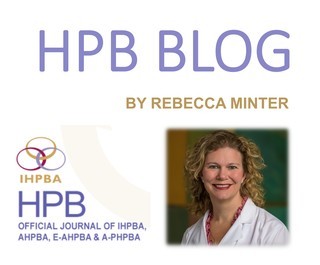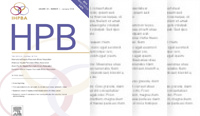International Hepato-Pancreato-Biliary Association
HPB Blog, May 2018

Continuously Improving……
Rigorous and continuous evaluation of our current practice drives us forward in delivering ever- safer HPB surgical care for our patients. In this month’s issue of HPB several studies evaluate and challenge our existing practices, while seeking to improve our understanding and approach to surgical diseases of the liver, pancreas, and biliary system.
In an impressive study by Magge and colleagues from the USA, the authors sought to evaluate and understand in a series of 400 patients undergoing robotic pancreaticoduodenectomy (PD) the exact underlying cause of post-pancreatectomy hemorrhage (PPH) early in their series. In review of the videos of each operation, factors pre-disposing to this morbid complication were identified and eliminated later in their series leading to decreased incidence of PPH comparable to historic controls undergoing open PD. This approach to continuous improvement, especially with introduction of a new technique, should be the standard for all of us.
Valdimarsson et al. evaluated the outcomes of a liver first approach versus a bowel first approach in the management of synchronous colorectal metastases in patients treated in Sweden between 2008-2015. This study identified a shift over time to a liver first approach, with equivalent outcomes to the historic bowel first approach. In another national study, authors from the USA challenge the current recommendations for concurrent lymph node retrieval when performing liver resection for intrahepatic cholangiocarcinoma – finding no relationship between lymph node retrieval and overall survival. French colleagues published a multi-centre series evaluating predictors of disease-free and overall survival following resection of distal cholangiocarcinoma; and a provocative study from our Italian colleagues explores the impact of a national surgical waiting list on patients presenting with resectable pancreatic adenocarcinoma.
Proving the world is flat when it comes to collaboration in HPB surgical research, an international study crossing multiple continents prospectively evaluated the international study group for liver surgery’s (ISGLS) definition of post hepatectomy liver failure after liver resection. The new ISGLS definition performed superiorly, providing a standard definition for future studies and clinical trials.
In the domain of healthcare utilization, a Finnish study evaluated the value of routine histopathologic examination of grossly normal appearing gallbladders with respect to the identification of incidental gallbladder cancer. In over 2000 patients they found that incidental gallbladder cancer was never identified in the absence of a macroscopic abnormality – suggesting that routine histopathologic analysis of normal appearing gallbladders may not be necessary. An Australian study also demonstrated that the healthcare cost of post-pancreaticoduodenectomy complications is high, and not just when measured in patient quality of life.
And finally in this month’s issue, some conflicting findings. An original investigation challenges the findings of a meta-analysis evaluating the prognostic significance of neutrophil to lymphocyte ratio in predicting oncologic outcomes in pancreatic cancer. Clearly, this is an area ripe for further prospective evaluation. Elliott and colleagues also challenge the role of pasireotide in the prevention of post-operative pancreatic fistula.
Read all of these articles and more in the May Issue of HPB!
Corporate Partners
If you are interested in becoming a Corporate Partner of the IHBPA please contact industry@ihpba.org
Find out more


